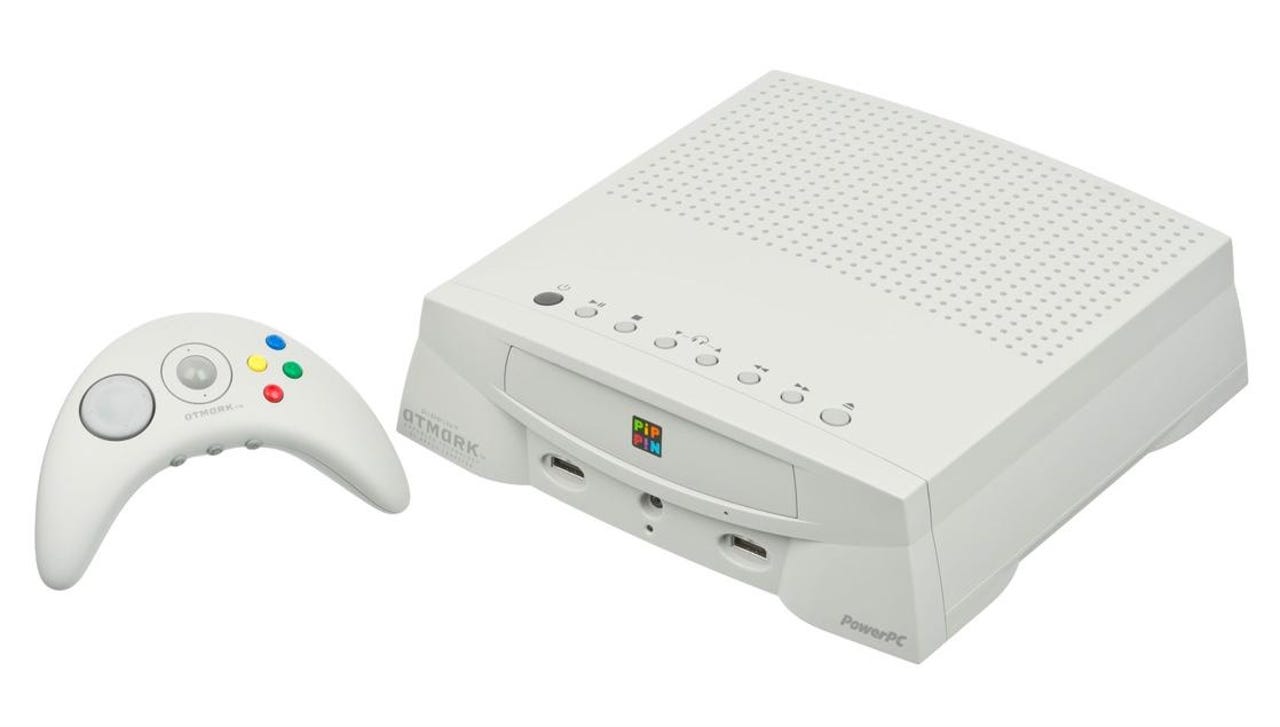It was the best of Apple, it was the worst of Apple


Apple Bandai Pippin
Did you know that Apple was once involved in the games console market? The Bandai Pippin @WORLD featured a 66 MHz PowerPC 603 processor, had a built-in 14.4k modem, a CD_ROM drive, and ran a version of ran a version of Mac OS System 7.5.2.
Predictably, Apple also had a whole raft of accessories for the Pippin.
But it was a flop. While some 100,000 was made, it's alleged that only around 40,000 were sold before the plug was pulled on it.
iPod
Before the iPhone there was the iPod. First released in October 2001, the iPod is still in Apple's catalogue, in the form of the 6th-generation iPod touch.
What's particularly interesting about the story of the iPod is how it prevailed despite competition from a myriad of cheap MP3 players. And it left almost all of them littering the highway of history.
There's little doubt in my mind that the success of the iPod, and how it proved that people were willing to carry an expensive device around with them where ever they went, was the incentive Apple needed to work on a device that did what the iPod did plus a lot more -- the iPhone.
Apple Newton
Before the iPad there was the Newton, a Personal Digital Assistant (PDA) with a $699 price tag.
The main selling point of the Newton was the handwriting recognition feature. Problem was, the handwriting recognition feature was dodgy at best, and while Apple did eventually fix most of the issues, the damage was done and it was too late for the Newton.
iMac G3
The 'jelly-colored" iMac G3 is truly when the Mac went mainstream, and it was the first consumer product that Apple launched after Steve Jobs returned to the company as interim CEO in 1997.
What made the iMac G3 special was that it combined the computer and display – a CRT back then – into a single plastic shell that was designed for portability (it even featured a handle). The original Bondi Blue shelled G3 released in August 1998 was joined by a whole raft of G3s in a variety of other colors in 1999.
Macintosh Portable
Before the thin-and-light MacBook came the Macintosh Portable. Released in September 1989, this thing was an absolute beast, weighing in at 16 pounds and powered by lead-acid batteries similar to what is in your car.
And if the weight didn't put you off, the price tag would – an eye-watering $7,300.
AirPods
It's hard to think of any company other than Apple that could make earphones exciting, but that's what the company did with the AirPods.
And love them or hate them, they've changed the entire earbud market, making charging cases and tiny earphones that are easily lost down the back of the couch a thing.
The 20th Anniversary Macintosh
In 1997, Apple released a limited-edition Mac to celebrate the company's 20th anniversary – the $7,499 20th Anniversary Macintosh. This was one of the first project that Apple's current chief design officer (CDO) Jony Ive worked on. And it shows, because the 20th Anniversary Macintosh was quite a departure from what computers of that era looked like.
But the price killed it, and despite Apple first cutting it to $3,500, and then to $1,995, it was discontinued a year later.
iPad
Following on from the success of the iPhone, Apple decided that the thing to do was to take the smartphone model and supersize it into a 9.7-tablet. And despite chuckles at the launch because of the name, and doubts over price and functionality, 300,000 iPads were sold on the first day of availability, with a million sold within a month.
While the iPad continues to be the most popular tablet computer, its hay day is behind it, with sales having peaked in 2013.
ROKR E1 Apple iTunes phone
The iPhone wasn't Apple's first foray into phones. The ROKR E1 was the first phone to feature a built-in version of the iTunes music player.
But there were problems. Despite coming with 512MB of storage, and having a slot that could take another 512MB microSD card, you could only load 100 songs onto it. And while on the subject of loading songs onto it, yeah, that was also cumbersome and slow.
Apple also contributed to the demise of the ROKR E1 by launching it alongside the iPod Nano.
Despite only being launched in September of 2005, by January 2006, Motorola replaced it with the E2, which didn't have iTunes support.
iPhone
No product has been as successful or pulled in more money (and influence) for Apple than the iPhone. When it launched in 2007, Apple's plan was to capture a modest 1 percent of the smartphone market by the end of 2008. Apple comfortably achieved this goal.
And it was just the beginning.
Between 2007 and 2018 Apple has sold over 2.2 billion iPhones. That's an impressive figure, but it's even more impressive when you consider that the iPhone crossed the 1 billion mark in July 2016.
Best or worst? You decide! iTunes
Ask anyone who uses iTunes on a Mac or PC with any regularity and they'll no doubt hit you with a list of all of its ills. But the weird thing is that if you go back a decade, the same was true.
On the whole, users consider iTunes to be an abomination.
But iTunes has stuck around, while it has decreased in significance as devices such as the iPhone and iPad rely on it less for software and media management, it lives on, with Apple continuing to bolt new features onto it.